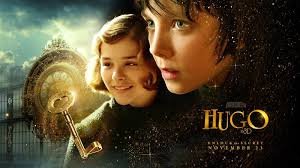Movie Magic: How Films Shape Our Imagination
Movie Magic: How Films Shape Our Imagination

Movies have an incredible ability to transport audiences into different worlds, ignite emotions, and shape our perception of reality. From the earliest silent films to modern-day blockbusters, cinema has continuously evolved, becoming a powerful medium for storytelling, cultural influence, and personal inspiration. But what exactly makes movies so magical? How do they captivate our imagination and leave a lasting impact on our lives? This article explores the power of film in shaping our imagination, its influence on society, and the psychological effects of cinematic storytelling.
The Power of Storytelling in Film
At its core, cinema is about storytelling. A well-crafted story has the ability to engage, inspire, and provoke thought. Unlike books or theater, movies combine visual artistry, music, dialogue, and special effects to create an immersive experience.
Emotional Engagement
-
Films evoke emotions in ways that other art forms struggle to achieve. The combination of filmy4wapxyz music, cinematography, and performance can make audiences laugh, cry, or feel suspense.
-
Iconic moments, such as the heart-wrenching ending of Titanic or the thrilling twists in Inception, remain etched in viewers' minds for years.
The Power of Perspective
-
Movies allow audiences to see the world from different viewpoints. Whether it’s through the lens of a historical drama, a sci-fi adventure, or a psychological thriller, films expand our horizons and deepen our understanding of different cultures and experiences.
-
For example, Schindler’s List provides a harrowing look at the Holocaust, while Black Panther showcases Afrofuturism and African heritage in a way rarely seen in mainstream cinema.
The Psychological Impact of Films
Movies don’t just entertain—they have profound effects on the human brain, influencing our thoughts, emotions, and even behavior.
Suspension of Disbelief
-
The concept of “suspension of disbelief” allows audiences to temporarily accept fantastical elements as reality. This is why we can believe in superheroes, talking animals, and time travel while watching a movie, even though we know they’re not real.
-
Blockbusters like Avatar and The Lord of the Rings transport viewers into breathtaking fictional worlds, making them feel as if they are part of the story.
Emotional Catharsis
-
Watching movies can provide emotional release, a concept known as catharsis. By experiencing emotions through characters, viewers process their own feelings in a safe and controlled environment.
-
Sad films like The Pursuit of Happyness or uplifting stories like Rocky inspire resilience and hope in audiences.
Influence on Behavior
-
Studies have shown that films can influence attitudes and behaviors. Inspirational movies often encourage positive change, while violent films have sparked debates on their effects on aggression.
-
Social issue films like 12 Angry Men and Erin Brockovich have shaped public discourse on justice and corporate responsibility.
Movies as a Reflection of Society
Cinema is not just a form of entertainment—it is a mirror of society, reflecting cultural values, political movements, and historical moments.
Historical and Cultural Representation
-
Films document history, preserving stories and moments for future generations. Biopics like Gandhi and Selma educate audiences on historical figures and civil rights movements.
-
Cultural representation in films has evolved over time, with modern cinema striving to include diverse voices and authentic storytelling.
Shaping Social Norms
-
Hollywood has played a role in shaping gender roles, beauty standards, and social norms. Classic films often reinforced traditional gender roles, while contemporary movies challenge them.
-
Films like Wonder Woman and Hidden Figures celebrate female empowerment, inspiring a new generation of strong, independent women.
The Evolution of Special Effects and Technology
Advancements in film technology have expanded the limits of imagination, allowing filmmakers to create visually stunning and immersive experiences.
The Rise of CGI
-
Computer-generated imagery (CGI) has transformed filmmaking, making it possible to bring impossible worlds and creatures to life. Jurassic Park and Avatar set new benchmarks for visual storytelling.
Virtual Reality and Interactive Films
-
The future of cinema is heading toward virtual reality (VR) and interactive storytelling. Films like Black Mirror: Bandersnatch experiment with audience-driven narratives, giving viewers control over the storyline.
Conclusion
Movies hold a unique place in our imagination, shaping how we think, feel, and perceive the world. From timeless classics to groundbreaking innovations, cinema continues to push the boundaries of storytelling and technological advancements. As we move forward, the magic of movies will undoubtedly remain a powerful force, inspiring generations to dream, create, and explore the endless possibilities of imagination.
What's Your Reaction?


















